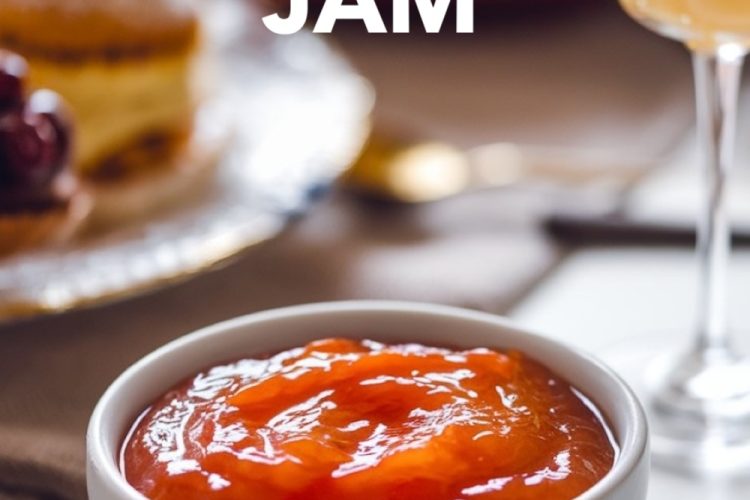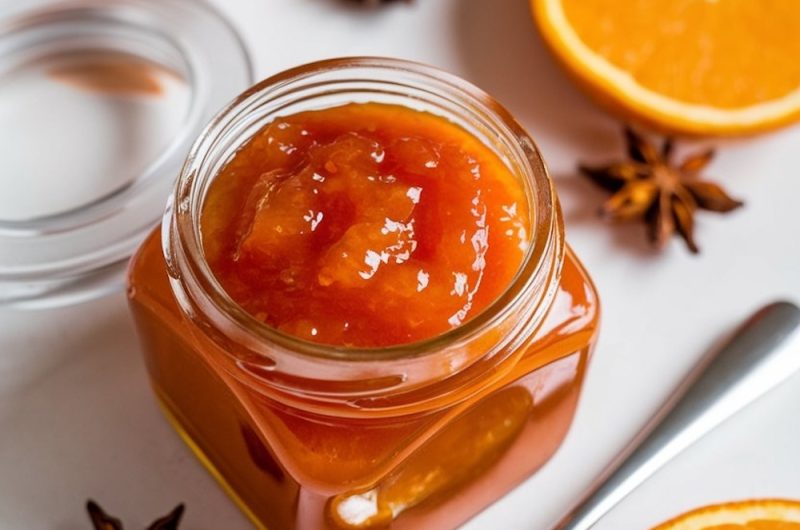Homemade jams just capture that fresh, seasonal fruit taste so well,you know? This homemade orange jam is going to be a fantastic catch for all the lovers of citrus fruits who just adore the sweet and slightly tangy flavor of oranges. This is a delicious spread that will brighten up your breakfast toast, fill pastries, or give desserts a cool twist. For both new to jam-making or experienced cooks, this orange jam is a must-try addition to your homemade preserves collection.

Why Make Homemade Orange Jam?
When you make orange jam on your own, you are in a position to choose the quality of all the ingredients. Most store-bought jams arefilled with preservatives and additives that manipulate the normalflavor. Homemade means all about rich, pure taste in oranges devoid ofthose chemicals. You can even change your homemade jam the wayyou want: adjust the level of sweetness or acidity in accordance withhow you feel about it.
Selecting the Best Oranges

It really begins with the fruit-the secret of a killer jam. The recipe callsfor seedless oranges, which make preparation very easy. For flavor, youwill need the most juicy oranges with firm skin. Navel or Valencia workvery well, but really, it’s any variety that is seedless. The only orangesthat you may avoid will be those that are overly tart or just not quite ripe, because those have the tendency to give your jam that nasty bitter kick.
The lemon is crucial for this recipe, first by adding a touch of bitternessto the orange sweetness and most importantly bringing in natural pectin, helping the jam to set. Without enough pectin, the jam wouldhave turned out too runny, so that lemon juice is important to get just the right texture.
Storing Your Orange Jam

Proper storage of your jam is very crucial, especially if you want it to last for a decent amount of time. This may be preserved up to a year after jarring, provided you store it in a cool, dark place. Opening a jar, however, requires storage in the refrigerator, where it will last for about a month. Always check it for any mold or unusual odor before serving.
Creative Uses for Orange Jam

While this jam is fantastic on toast, there are many ways to enjoy its citrus goodness:
- Fill pastries: Use orange jam as a filling for cookies, pastries, or tarts.
- Serve with cheese: Pair it with soft cheeses like brie or cream cheese for a delicious contrast of flavors.
- Enhance desserts: Drizzle it over cakes, ice cream, or yogurt for a burst of citrus.
- Marinade or glaze: Orange jam works as a sweet glaze for meats, particularly poultry and pork, adding a unique flavor to your main dishes.
If you’re looking to expand your homemade preserves collection, after enjoying this bright and citrusy orange jam, why not try a batch of spiced, cozy Mulled Wine Jelly for a festive touch? For a unique twist, the Fig and Walnut Jam recipe combines earthy figs and crunchy walnuts, perfect for a sophisticated spread. Or, for a rich and summery flavor, dive into this Bourbon Peach Jam that balances sweet peaches with a hint of bourbon warmth. Each recipe offers a delightful way to explore new, homemade jam flavors!
Nutritional Information
Well, this jam is basically just oranges, sugar, and lemon juice-supersimple and natural ingredients. Each tablespoon is about 50 caloriestherein contained, making it one of the pretty low-calorie choices toslap on your morning toast or throw into your favorite meals.
Frequently Asked Questions
Can I use less sugar in the recipe?
That’s alright, just remember that the sugar acts also as a preserving agent in the jam, so taking off some may alter the shelf life and texture. You could do that if you don’t mind using low-sugar pectin, reducing the amount, or substituting some of it with a natural sweetener like honey.
How do I sterilize the jars for jam?
Sterilize jars before adding your jam.Jars can be sterilized either by boiling them in water for 10 minutes or by taking them through a hot cycle in the dishwasher. Place sterilized jars with the help of clean dry towels or tongs:.
Can I use the same method for other citrus fruits?
Of course, you may do this with any other citrus fruits, like grapefruitsor tangerines, even combining some kinds. You may also play with thismethod, even, by adding some spices such as cinnamon or ginger.
Create Sweet Moments
The best thing about homemade orange jam is that one gets this really tasty spread, and it’s so much fun to make withfresh and simple ingredients. Slathering it on toast or getting creative with it, this will add a nice citrusy zip to one’s meals.
Homemade Orange Jam Recipe
Course: Homemade Spreads u0026amp; Fillings2-3 small jars
servings20
minutes1
hour50 per tbs
kcalIngredients
6 medium oranges (choose seedless, or make sure to remove the seeds)
1 lemon (for its juice and added pectin)
4 cups granulated sugar
2 cups water
Steps
- Prepare the Oranges
Start by washing your oranges thoroughly. Using a vegetable peeler, remove the outer zest of 2 oranges in long strips, being careful to avoid the white pith. The zest will add a beautiful, aromatic citrus flavor to the jam.
Once you’ve removed the zest, peel all the oranges, discarding the white pith. Cut the oranges into segments, and remove any seeds if needed. - Prepare the Lemon
Squeeze the juice of one lemon and set it aside. The lemon juice adds natural pectin and helps balance the sweetness of the jam with a subtle tang. If you’re looking for a firmer jam, you can also zest the lemon and add it along with the orange zest. - Combine Ingredients
In a large pot or saucepan, combine the orange segments, the orange zest, lemon juice, and 2 cups of water. Bring the mixture to a boil over medium heat, then reduce the heat and let it simmer for about 10-15 minutes. This will soften the fruit and release its natural juices. - Add Sugar and Cook
After the fruit has softened, slowly add in the 4 cups of sugar, stirring continuously to dissolve it. Increase the heat and bring the mixture to a rolling boil. Once it’s boiling, reduce the heat to medium-low and let the jam simmer for another 40-50 minutes, stirring occasionally. You’ll notice the mixture thickening as the liquid evaporates, and the sugar and fruit blend into a luscious, golden jam. - Check the Consistency
To check if the jam has set, place a small spoonful on a chilled plate. Let it sit for a minute, then gently push the edge with your finger. If the surface wrinkles and holds its shape, your jam is ready. If it’s still too runny, continue cooking for another 5-10 minutes and test again. - Jar the Jam
Once your jam has reached the desired consistency, carefully pour it into sterilized glass jars, leaving about ¼ inch of space at the top. Seal the jars tightly and let them cool to room temperature. The jam will thicken as it cools, resulting in a spreadable, glossy texture.



Hi Emma, could one spruce it up w a little nutmeg or cinnamon?
Hi Far, absolutely! A pinch of nutmeg or a dash of cinnamon will add a warm, spiced note to the jam, complementing the citrus flavors beautifully. Start with a small amount, taste as it cooks, and adjust to your liking. Let me know how it turns out!
Sorry if ive missed it, do you remove the zest before bottling up?
You’re not missing anything, Angela, great question. Yes, you’ll want to remove the orange zest before bottling. I usually fish out the strips with tongs or a slotted spoon right before ladling the jam into jars. They’ve already done their job flavor-wise by then 🍊
Hi Emma!
I’ve still got some chunks of orange in mine after cooking. Do you recommend straining those out as well as the zest?
Hi Erin! It really hinges on the texture you’re after. If you’d like a silky-smooth spread, scoop out the larger zest strips once the jam has thickened, then either give everything a quick whirl with an immersion blender or press the hot mixture through a fine-mesh strainer; you’ll pull out most of the pulp and membranes while keeping all that citrusy flavor and pectin in the pot. If a chunkier, almost-marmalade vibe sounds better, simply leave the soft orange bits in place and fish out only the tougher zest strips before you jar the batch. The fruit pieces will soften further as the jam cools and set, giving little bursts of orange through each spoonful. The set won’t suffer either way, since most of the pectin is already dissolved in the syrup. My happy medium is to blend about half the pot and stir it back in so the finished jam spreads easily but still shows off a few jewel-bright flecks of fruit. Hope that clears things up a bit.